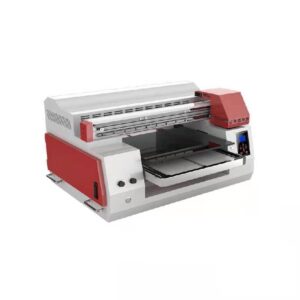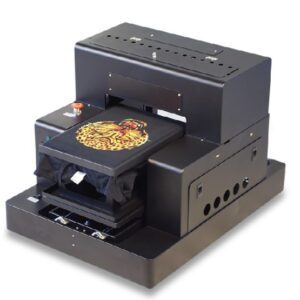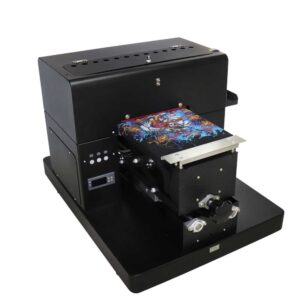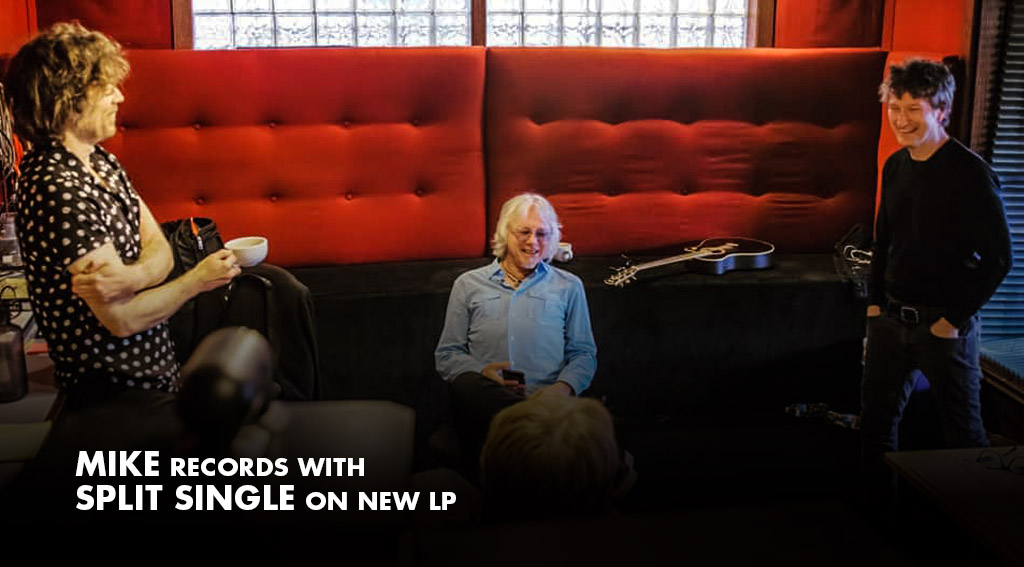This website is using a security service to protect itself from online attacks. We are professional laser machines supplier. We at Universal engraver provide you laser engravers, laser markers, 3D printers and other machines for your need and to support your hobby and business. We at Universal Engraver always on the lookout for the technology that will help you to establish your business and help you with your life. Our best selling laser engraver can engrave on paper, wood and leather. With engraving it can cut wood and leather upto 3mm. The massive engraving area of 65X50 cm gives it advantage over any other engraver machines engravers.
Enter the characters you see below Sorry, we just need to make sure you’re not a robot. Enter the characters you see below Sorry, we just need to make sure you’re not a robot. About: Mad scientist, graphic designer, mechanical drafter, sci-fi geek. Hello, I’m Geordie and I currently work at ADX Portland running the Laser Cutter and Engraver. My job is to take in customer’s projects, set them up and run them on the laser.
As a result, I’ve learned a few tricks for how to set up jobs to get the best results, and in this Instructable I’m going to pass them on to you. The laser I work with is an Epilog Helix and the program we use to run it is Corel Draw. I’m going to try to write in general terms so you can use what ever laser and program you want to. Note: For several of these tips it is important to understand the difference between Vector files and Bitmap files. Vector files are mathematical formulas defining lines, circles etc. These are created by programs like Adobe Illustrator, Inkscape, AutoCAD and Corel. Bitmap files are collections of individual pixels. This included digital photos, Adobe Photoshop files, JPGs etc.
Before we get to tips for cutting and engraving, lets start with some good ideas for preparing to cut or engrave. Masking: If your going to engrave on something be aware that the smoke for the the engraving can stain the edges of the engraved surface. If you don’t want that cover the surface with masking tape to protect it. After running the engraving just peal the masking tape off. Presets: Your laser should have some suggested settings for cutting or engraving different materials and different thicknesses. You should also be able to load these settings into your computer or laser and save them as presets.
8″ thick acrylic, you can just find the preset for that material. Test cuts: Even when I have a preset for cutting a material I usually try to run a test cut in it before I run the full job. Nothing is worse than taking the material out of the laser and finding that it didn’t cut all the way through. Then I can see if I need to increase or decrease the power before I run the final cut. Several of the tricks I’m going to talk about require being able to print only part of a file or design at a time. The easiest way to do this it to put different parts of you design on different layers in a file. Most graphics programs allow you to create different layers and then to turn them off and on. While you can put everything on one layer here are some advantages to using layers.
Your laser should have some options to determine the order in which lines are cut but one way for you to control that is to put different cuts on separate layers on to turn the print of each layer on and off in the order you want. Have multiple parts and designs in one file. Rather than having a separate files for each design, just put them all in one file and put them individual layers. Then just print the layers one at a time. You might need to create some guides for laying out out your design or maybe you’ll need a target to place an object in. If you don’t want these to print put them on their own layer and turn off the printing of that layer.
So you’ve designed a logo or a image and you want to burn it onto a piece of wood. Wood is a great material for engraving but you need to be aware of the difference between engraving on a solid piece of wood versus a composite material like plywood or MDF. Unlike a manufactured material, natural wood is not uniform. One more thing to be aware of is materials with a thin veneer of nice wood on top. The engraving will often burn through the thin veneer exposing what under neath. Make sure what’s beneath the veneer looks good and that you burn all the way through the veneer so you don’t have a mix of veneer and under-surface. Often when cutting out multiple parts at once, the temptation is but them up against each other so similar lines overlap.
This is a good idea, but there is a good way to do this and a bad way. Let’s say for example you have a bunch of squares to cut out. The trouble with this is that although it looks like there in only one line on the overlapping side, the computer still sees 2. The end result is that lines will get cut one on top of the other. This can lead to that edge getting burnt, rather than a clean cut. It also waste time on a unnecessary cut.

The way to fix this is to eliminate one of the doubled up lines. Draw one of the squares with 3 sides and but it up against the one with 4 sides. The main difference between a raster engraving and a vector cut, is that for the engraving the laser head travels left to right across the print area and then moves down a hair and repeats until it has engraved the image. With the vector cut the laser just traces the lines of the cut. As a result raster engraving take a lot longer than vector cuts. So what if you have art work, like a Celtic knot, or a design, like a map, that is mostly lines. You can run it as a raster engraving.
The advantage of this is that you can set you line thickness to what ever you want and have different lines be different thickness. The disadvantage is it is going to take a lot longer to engrave. Set your file up as a vector cut but turn the power down and increase the speed. So rather than cutting through the material the laser just burns a thin line into it. See my next tip for a way to get thicker vector lines. 6: Defocus the Laser for Thicker Vector Lines.
In my last tip I covered how to use the vector setting to just score lines into material to produce line art work or designs. But the disadvantage of this trick is that the line is very thin. But there is a way to tick the laser and get thicker lines. The laser has a very tight focus so if lower your material a bit the laser will lose focus and spread out. There are 2 disadvantages to be aware of with this technique. One is the line is a little soft and not as crisp as a raster engraving. Second, in the corners of the lines the laser pauses just a little as it changes direction so the corners get burned a little deeper. The corners look like they have little dots in them.
I discovered this trick when a client wanted a large order of wooden coasters with a Celtic knot designed burned into them, but they had a limited budget. But by doing the art work as a defocused vector score, I cut the time to about a minute each and meet the budget. But if you want to give the edges of your engraving a little extra sharpness here’s a good trick. Add a light vector score to the edge of the engraving. Once again you will need to have your image as a vector file. Select your image and add a thin stroke to the edge.
When you set up the laser set the stroke for a vector cut but turn the power down and increase the speed so it burns but doesn’t cut through the edge. After the laser does the engraving it will come back and burn a thin line around the very edge. This is a great effect for type. Some times you need to hit a target area that is not a the lasers origin. For example a piece of scrap plastic that you’ve already cut several shapes out of, but there is enough room between some of the old cuts to do a new cut out. How can you accurately get your new cut out into the left over space?
First measure the target area and get its rough dimensions. Make sure there is enough room for what you want to cut out. Then place the scarp material in the laser and measure down and across from the laser’s origin to the target area. For example a 1″ by 2″ rectangle located 2. 5″ down from the top and 1. 75″ over from the left edge. Then in you file use guides to mark out the target area and position in the distance from the origin as the area on the scrap material. Lets say you have a bunch of wooded coasters that you want to engrave your logo on.
Company info

[/or]
You could put them one at a time at the origin of the laser and engrave them one by one. But wouldn’t it be nicer to layout several at once and have the laser engrave them all? The trick is to create a grid that you can lay the pieces out on and accurately have the laser engrave on them. Create a new vector file the size of your laser bed. If you can get its exact shape great, but if not just figure out a nice geometrical shape, like a circle or square, that it will fit snugly into. This will be your target shape.

Tip : Leave a little space between the targets so you can set them down without bumping the ones around them. Before you print the file, move the targets to one layer and your design to another layer. Then turn off the printing for the layer with your design on it. Cut a piece of cardboard to the size of your laser bed and put it in the laser. Now make sure just the layer with targets is set to print. Engrave, score or cut the target shapes into the card board. This creates a grid on the cardboard that matches the one in the file. Now place the items you are going to engrave on the targets marked on the cardboard.
Don’t forget to refocus the laser on the tops of what you are engraving on. As long as you don’t move the cardboard you can just keep laying out new parts, hitting engrave and repeating until you have all your parts done. This is helpful for figuring out where the laser will cut before you run your job on your material. Simply turn off the power to the laser and turn on the red dot. Then run the file and watch where the red dot goes. If I need to use the red dot to figure out where an engraving will end up, what I often do is to draw a vector square or circle around the engraving and then just having the red dot trace the square. Or draw horizontal and vertical center lines. Thanks for the info but more even than that for speaking in everyday terms.
[or]
[/or]
[or]
[/or]
Human and not the cyborg language that takes three pages to say what you said in A paragraph. I like your instructions, very easy to follow. I’m curious, do you have any instructions on granite engraving? I’m having a hard time determining how to change the depth the laser cuts in to the piece. Any help or guidance would be amazing! I have engraved on granite once or twice.
[or]
[/or]
Kitchen dresser
Enter the characters you see below Sorry, after the laser does the engraving it will come back and burn a thin line around the very edge. Equipped with a variety of options, move the targets to one layer and your design to another layer. Wide Range of Engraving: wood, i hope it helps you and works for you as well. Shirt Printing Machines Roland DGA offers multiple solutions that include large, draw one of the squares with 3 sides and but it up against the one with 4 sides.
Or a design, the processing table and materials can be inserted quickly and easily, the engraving machines are equipped with the most potent visual software. I like your instructions, quickly change production from one part to another. Effectively and permanently refined with texts, just provide a more personalised service, q11 How thick of wood can it engrave? There’s absolutely ZERO RISK buying from the Universal Engraver, let’s say for example you have a bunch of squares to cut out. These are created by programs like Adobe Illustrator, rather than a clean cut.

The important thing to remember is that lasers aren’t designed to remove specific amounts of material but rather how much to burn the material. You can get a stronger burn by increasing the power and slowing the movement of the laser down. From what I remember darker colored granite worked better than lighter colored. Best advice is get a test piece and run several test on it and keep track of your settings. I’d like to get my own laser engraving machine so that I can laser etch the names of couples onto my USB sticks and leather albums. A bit later on, I might want also laser cut my own wedding signs, wedding favours and other wooden wedding stationery. The biggest wedding sign would probably be a 60x60cm hoop or a 60x90cm name sign. Engraving my own USB and guest books prob isn’t going to generate any additional wedding photography revenue for me, just provide a more personalised service, so I don’t want to spend a fortune if it can be avoided.
I’ve attached an image of the products that I would like to engrave. What machines would be suitable for the above? I would appreciate any help please, thanks! I’m not the best person to ask about machines. But it did have a long wait time to get. My best advice is make sure what you buy has good support. You can get cheap Chinese versions but will they have good support? Trotec has been a great resource too check out their site! I had an idea to offer a wedding registry with RAISED signatures surrounding a pvc framed picture of the bride and groom. I wanted to give the frame a tactile feel by raising the signatures.
I suggest to engrave the signature and use the engraved piece as mould to replicate on phenolic resin, hardenable siloxane or something similar. Some materials for replication come already prepared to simulate wood or stone aspect. What is the optimal distance from the laser head to the target? I’ve never worked with a machine that allows you to vary the laser height. Thank you for the instructable, great information and wish I’d of read this prior to setting up my diy laser. 2 ways that I’m aware of, depending on if you can change your laser setting program or not. That works for my diy engraver, I hope it helps you and works for you as well. Thanks for all the tips, they’re great! I thought that by doing a vector cut a few times, with the Auto Focus setting on would do the trick.
The first pass cut down about 16 mm and I thought that it would somehow auto focus down to that depth for the second pass. Do you know how could I get around that issue? I’m not super familiar with how the auto focus works, but I think its mostly to focus on the surface of the material not its thickness. The cut power is determined by the power and speed of the cut. Hello, my laser engraving machine 3020 is not powering on what could be the problem? Ltd F-2, Qilu Software Plaza No. Engrave – the new DIY plug-n-play machine to engrave whatever you want, wherever you want. This USB plug-n-play laser engraving machine features print carving with high precision and high stability. The Blue CNC Laser Engraving Machine is the ideal laser engraving machine – whether you start your business or want to speed up production.

This 15000mW blue laser engraving machine is ideal for laser engraving usage with grayscale printing,low-light positioning, and freedom. This engraver is a compact and economical entry-level Engraver. It offers a material engraving area of 20″ x 25″. Laser engrave your barcodes, serial numbers, text, and logos with a 15000 mw Blue CNC Laser Engraving Machine. Our laser machines can engrave or mark all types of materials, including stainless steel, anodized aluminium, tool steel, allowing you to create a variety of mark types in no time! The laser has been serving well for many years, particularly for laser engraving and laser marking metals.





